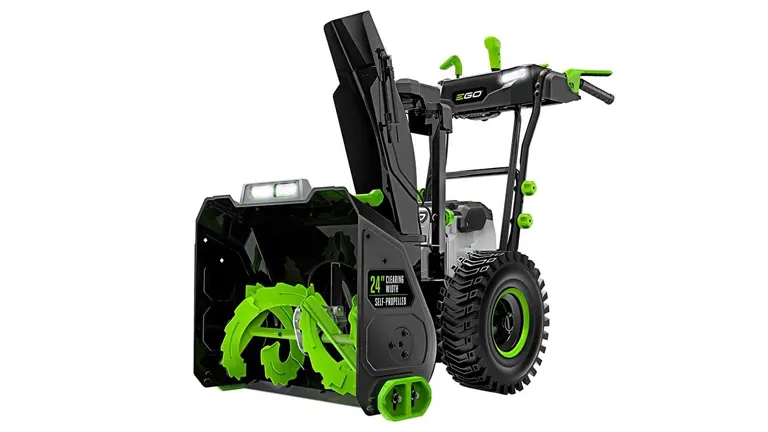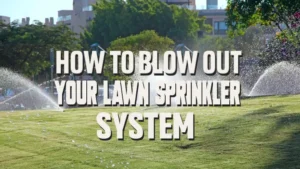Is a Battery Snow Blower Worth It?
- November 30, 2023
- 0 comment
Transitioning to electric tools is a growing trend in home maintenance, and snow blowers are no exception. As someone who has steadily moved towards electric tools, I’ve experienced firsthand the evolution of these devices. One brand that stands out in this arena is Ego, known for its high-quality lawn mowers, leaf blowers, edgers, and now, snow blowers. This review, which is not sponsored, is based on my personal experience with the Ego Power Plus 24-inch self-propelled two-stage snowblower.
Why an Electric Snow Blower?
Choosing an electric snow blower wasn’t a decision made on a whim. Residing in the Massachusetts area, where snowfall patterns are as unpredictable as they are challenging, calls for a reliable solution. In our region, a typical snowfall might leave behind five to six inches, but there are times when we’re engulfed in over a foot of snow.

My residence, uniquely positioned on a bend in the road, faces an additional burden. The snowplows, while clearing the streets, inadvertently deposit a larger heap of snow at the end of our driveway compared to our neighbors. This scenario isn’t just a trivial inconvenience; it’s a significant barrier, turning each snowfall into a formidable task for any snowblower.
The transition to an electric model, therefore, wasn’t just about embracing newer technology or being environmentally conscious – it was a necessity born out of the need to efficiently manage the capricious and often intense New England winters.
Ego Power Plus: A Game Changer
When it came to finding a solution that could stand up to Massachusetts’ unpredictable and often heavy snowfalls, the Ego Power Plus emerged as a standout option. This electric snowblower, priced at around $1,300, represents a significant investment, but its features and capabilities suggest that it’s an investment worth making. What truly sets the Ego Power Plus apart is its two-stage mechanism. This isn’t just a standard feature; it’s a critical component for tackling the kind of deep, challenging snow accumulations we frequently encounter.
A two-stage snowblower works by first using an auger to break up the snow and then a separate impeller to propel it out of the chute. This system is especially effective for snow depths greater than eight inches – a common occurrence in our region.
The Ego Power Plus isn’t just about brute strength; it’s about smart, efficient snow removal suited for the demanding conditions of New England winters. Its design acknowledges the reality of substantial snowfall and offers a viable, electric-powered solution to what has traditionally been a domain dominated by gas-powered equipment.
Performance and Features
- The Ego Power Plus comes equipped with two impressive 56-volt 7.5 amp hour lithium batteries, a feature that proves its worth in extensive snow-clearing tasks. For homeowners with larger driveways, the battery life is a critical factor. In my experience, these batteries nearly allowed me to clear my entire driveway on a single charge. The convenience of having additional Ego batteries cannot be overstated, especially for those lengthy snow removal sessions where a single charge might not suffice.
- The design of the Ego Power Plus is a thoughtful blend of functionality and durability. It features a 24-inch clearing width and a 20-inch intake height, making it capable of handling significant snow depths. The construction combines metal for strength and plastic to reduce weight, enhancing ease of use. The controls are intuitively laid out, and the snowblower includes a headlight – a small but thoughtful addition for improved visibility, though it may not be the primary selling point.
- In terms of its performance in snowy conditions, the Ego Power Plus stands out. It can handle up to 15 inches of snow, proving its capability in substantial snowfall. The turbo mode is particularly beneficial when dealing with densely packed snow like the heavy buildup often found at the end of driveways. While it is a bit noisier than other Ego products, it is significantly quieter than traditional gas-powered snow blowers, making the snow-clearing process less disruptive and more enjoyable.
- Maneuverability and ease of use are where the Ego Power Plus truly shines. Compared to traditional gas-powered models, like my previous Ariens, it is far easier to control and maneuver. This advantage, coupled with the lack of need for oil or gasoline, means maintenance is simpler and more straightforward. These aspects combine to offer a user experience that is not only efficient but also more enjoyable, reducing the burden of snow removal.
Considerations Buying Electric Blowers
Cost
The Ego Power Plus snowblower comes with a hefty price tag of around $1,300, positioning it at the higher end of the market, especially when compared to some gas-powered alternatives. This cost factor is an important consideration for potential buyers. Moreover, the investment doesn’t end with the initial purchase; spare batteries, which are almost a necessity for uninterrupted snow clearing, add to the overall expense. These batteries are not cheap, and their cost must be factored into the decision-making process. The long-term value and performance of Ego Power Plus need to be weighed against these initial and ongoing costs.
Battery Dependence
Another significant consideration is the snowblower’s reliance on battery power. While the batteries provide the convenience of cordless operation and eliminate the need for fuel, they also introduce a limitation in terms of runtime. For larger areas or in cases of heavy snowfall, the provided batteries might not suffice to complete the job in one go. This reliance on battery life means that without access to spare batteries, users could face periods of downtime, waiting for batteries to recharge. It’s a trade-off between the convenience of an electric snowblower and the practicality of its battery life, especially in demanding snow conditions.
Conclusion
The Ego Power Plus snowblower is a formidable contender in the electric snowblower market. It stands out for its power, ease of use, and reduced noise level. While the initial cost and dependence on battery life are significant considerations, the benefits, especially for those already invested in the Ego ecosystem, are clear. It represents a shift towards more sustainable, user-friendly winter maintenance tools. Whether it’s worth the investment depends on individual needs and circumstances, but for me, it has proven its worth, particularly in tackling the challenges of New England winters.
FAQs
- How does the performance of a battery snow blower compare to a gas-powered one in heavy snow conditions?
Battery snow blowers have made significant advancements in power and efficiency. While they are highly effective for moderate snowfall, their performance in very heavy or wet snow conditions can vary. Generally, gas-powered blowers may still hold an edge in extreme conditions due to their higher power output. - What is the average battery life of a battery snow blower, and how does it impact snow-clearing tasks?
The battery life of these snow blowers typically ranges from 30 minutes to an hour on a single charge, depending on the model and the intensity of use. For larger areas or prolonged snow clearing, having a spare battery can be beneficial. - Are battery snow blowers more environmentally friendly than traditional gas-powered models?
Yes, battery snow blowers are more environmentally friendly. They produce zero direct emissions and are generally quieter, making them a greener and more neighborhood-friendly option. - Can the batteries used in snow blowers be interchangeable with other tools from the same manufacturer?
Many manufacturers design their batteries to be interchangeable across a range of tools. This means you can often use the same battery for your snow blower, leaf blower, and even lawn mower if they are from the same brand and product line. - How does the maintenance of a battery snow blower compare to a gas-powered one?
Battery snow blowers typically require less maintenance than gas-powered ones. There’s no need for oil changes, fuel filters, or spark plug maintenance. However, proper care of the battery is crucial to ensure its longevity. - What are the storage advantages of a battery snow blower?
Battery snow blowers are often more compact and lighter than their gas counterparts, making them easier to store. They also don’t have the issue of storing fuel, which can be a safety concern. - Is the initial cost of a battery snow blower higher than a gas model, and how does this affect the long-term value?
The initial cost of a battery snow blower can be higher than a gas model. However, the lower operating and maintenance costs can make them more economical in the long run. - How well do battery snow blowers handle in terms of maneuverability and ease of use?
Battery snow blowers are generally lighter and easier to maneuver than gas models. This, combined with the absence of a cord, makes them user-friendly, especially for those who might find the bulk and weight of gas blowers challenging.
What are your thoughts? Have you tried a battery snow blower, or are you considering one? Share your experiences or questions below and let’s discuss what works best for tackling winter’s worst!















Leave your comment